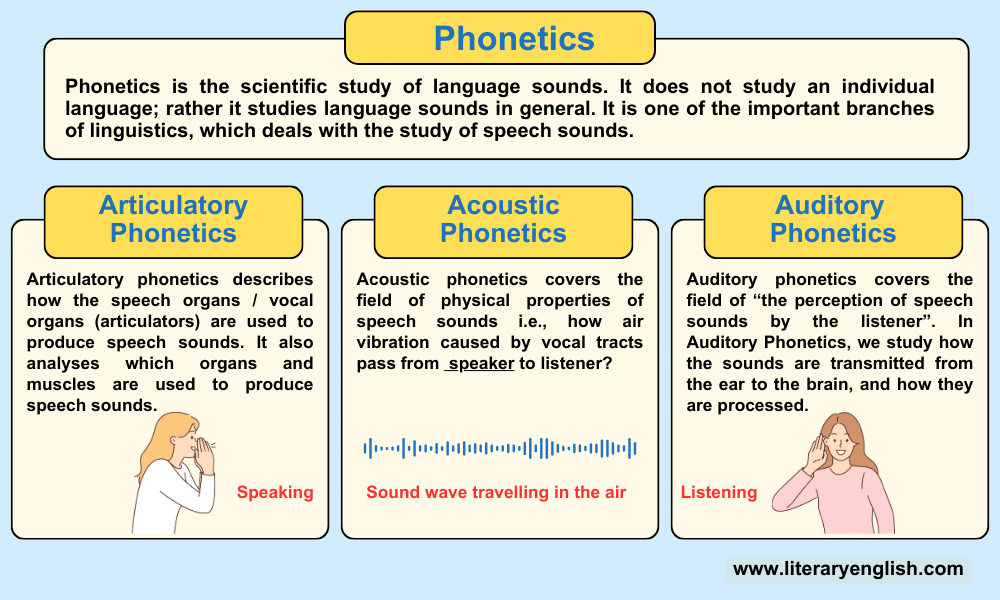What is Phonetics?
Phonetics is the scientific study of language sounds. It does not study an individual language; rather it studies language sounds in general. It is one of the important branches of linguistics, which deals with the study of speech sounds. Phonetics is concerned with the nature of language and communication.
Phonetics is pronounced as /fəˈnɛtɪks/ and it is derived from the Greek word; means sound or voice. It is a branch of linguistics that comprises the study of the sounds of human speech. It covers the domain of speech production, transmission and reception. It is concerned with the physical properties of speech sounds like production of sound, acoustic properties of sound, auditory perception of sound.
Phonetics deals with how human speech sounds are made. Phonetics comes under descriptive linguistics and it is physics of sounds. It also covers the reception aspect of speech sounds. The speech sounds made by humans when they talk are studied through different branches of phonetics like articulatory phonetics, acoustic phonetics, and auditory phonetics.
Phonetical units are called phones; Phonetic symbols are enclosed in square brackets as [f], [m], etc. A phone is a sound which has some physical feature and the term is mostly used in a nontechnical sense. Phonetics describes the way sounds are spoken and interpreted by the native speaker.
Phonetics describes the production of all human speech sounds regardless of any specific language. Phonetics simply describes the articulatory (production of sound through cavity) auditory (reception of speech sound through eardrum), and acoustic (transmission of sound in a medium) properties of speech sounds.
Branches of Phonetics
Phonetics is divided into three main Branches: (1) articulatory phonetics, (2) acoustic phonetics, and (3) auditory phonetics.
Articulatory phonetics
Articulatory phonetics describes how the speech organs/vocal organs also known as articulators, are used to produce speech sounds. It also analyses which organs and muscles are used to produce speech sounds. In articulatory phonetics, we discuss different questions like:
- What are speech sounds?
- How speech sounds fall into patterns?
- How speech sounds change in different circumstances?
- How sounds convey meaning?
Acoustic phonetics
Acoustic phonetics covers the field of physical properties of speech sounds i.e., how air vibration caused by vocal tracts pass from speaker to listener? In acoustic phonetics, phoneticians depict and analyze sound waves using computer machines and by different computer programs. Speech sound consists of variations in vibration of air molecules which results from physical disturbances of air pressure caused by air thrust out of the lungs. This air thrust out of the lungs makes the air molecules to compress and oscillate, creating increases and decreases depending on thrust of lungs. The resulting sound wave travels in a medium of air and reach from speaker to hearer where these sound waves are interpreted as a meaningful message.
Auditory phonetics
Auditory phonetics covers the field of “the perception of speech sounds by the listener”. In Auditory Phonetics, we study how the sounds are transmitted from the ear to the brain, and how they are processed.
Related Posts
- Phonetics vs. Phonology
- Introduction to Vowel Sounds
- Introduction to Consonant Sounds
- Manner of Articulation in Phonetics
- Place of Articulation | Articulatory Gestures
- Types of Phonetic Transcription
- Tap, Flap, and Trill (Central Approximants)
- What is Co-articulation?
- Rules for English Consonants Allophones
